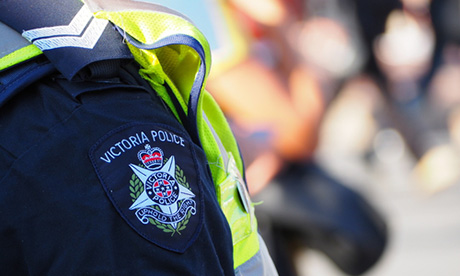The civil proceedings against Cardinal George Pell are for the same allegations of which he was acquitted by the High Court;
“They’re going to hunt him down until he dies.”
That was the response of someone close to me upon reading the news that Cardinal George Pell is now the subject of civil proceedings in the Victorian Supreme Court, over the same allegations for which he was ultimately acquitted, after serving more than 400 days in prison.
Of the two former choirboys who were the alleged victims in the criminal proceedings, one tragically died in 2014 having never made a complaint against the Cardinal.
His father is suing the Cardinal and the Archdiocese of Melbourne for “damages for nervous shock”.
The nervous shock, it is alleged, was the mental injury suffered by the man after learning of the alleged abuse of his son, and that the Cardinal and the Archdiocese had a duty to prevent this.
Many people have queried how a civil case about the same factual circumstances as the criminal case can be brought against the Cardinal after he was exonerated by the High Court.
A person claiming civil compensation only has to prove that something was more likely than not to have occurred, rather than the higher bar of “beyond reasonable doubt” set in criminal trials.
In other words, a case for civil compensation requires a lower standard of proof than a criminal case.
Even so, I am not sure that the High Court’s decision leaves much room for even the lower civil standard.
Recall that the High Court acquitted the Cardinal in a unanimous, 7-0 judgment. The acquittal was not based on a legal technicality, but rather the united view of all seven judges that there was a “significant possibility that an innocent person [had] been convicted”.
This is a very strong statement because it indicates not just that the Court did not believe the criminal standard of proof had been met, but that they saw at least a significant possibility of innocence.
The High Court decision also notes that prior to his death, the son of the current complainant was asked by his mother whether he had ever been “interfered with or touched up” while a member of the Cathedral choir, and told her that he had not. This will be another significant hurdle for this case.
However, it may be that the current court proceedings are not limited to the matters already dealt with by the High Court.
According to a report in The Sydney Morning Herald and The Age, the statement of claim also alleges that the Cardinal “became aware of allegations and instances of sexual abuse and other sexually inappropriate conduct by members of clergy [and] failed to properly consider and take appropriate action in relation to sexual abuse by members of the clergy.”
It also alleges he “took steps to avoid sexual abuse and sexual misconduct by the clergy becoming known [and] failed to report or prevent sexual abuse by members of the clergy.”
The report goes on to say: “The plaintiff’s lawyers cite examples that Pell was aware of multiple cases including that of Doveton parish priest Father Peter Searson and Father Nazareno Fasciale, which they suggest he should have acted upon.”
These matters are also worth reflecting on. The Royal Commission into Institutional Responses to Child Sexual Abuse did not find that Cardinal Pell was in a position to have acted upon abuse perpetrated by Father Fasciale.
Much of Fasciale’s alleged offending occurred in the 1960s and 1970s, long before Cardinal Pell was made auxiliary bishop of Melbourne.
The extent of the Cardinal’s involvement in that matter as investigated by the Royal Commission, was the Cardinal’s presence at a meeting where it was decided that it would be announced that Fasciale was retiring due to health reasons, rather than allegations of abuse.
In terms of Father Searson, it is true that the Royal Commission said that it was incumbent upon then-Bishop Pell, as an auxiliary bishop of Melbourne, “to take such action as he could to advocate that Father Searson be removed or suspended or, at least, that a thorough investigation be undertaken of the allegations.”
However, the Royal Commission went on to say that this was “the same responsibility that attached to other Auxiliary Bishops and the Vicar General when they received complaints.”
Importantly, Cardinal Pell did not become an auxiliary bishop of Melbourne until May 1987 (he was a priest of the Diocese of Ballarat prior to this) and the Royal Commission found that Searson’s problematic behaviour was already well known by this time.
The Commission opined that “the matters known to Archbishop [Frank] Little by the end of 1986 were undoubtedly sufficient to demonstrate that Father Searson ought to be removed from a parish appointment and posed a grave risk to the safety of children.”
Given that the Royal Commission considered that Archbishop Little had sufficient information before Cardinal Pell even arrived in Melbourne to stand Searson down but refused to do so, it is not clear what then-Bishop Pell’s advocacy would have done to change these circumstances (or why he is now being sued for failing to act).
Once Cardinal Pell became Archbishop of Melbourne in August 1996, Searson was dealt with quickly. By October of that year, the Melbourne Response was in place, the allegations against Searson were promptly investigated and, on 14 March 1997, Searson was suspended from ministry, never to return.
While many at Searson’s parish and school had valiantly fought to have him stood down, it was Cardinal Pell who made it happen.
The case obviously still needs to play out, and everyone is entitled to their day in court. However, I hope this assists in providing a little more context to the current claims against the Cardinal.
- Monica Doumit is the Director, Public Affairs and Engagement for the Archdiocese of Sydney and a columnist with The Catholic Weekly.
- First published in The Catholic Weekly. Republished with permission.
